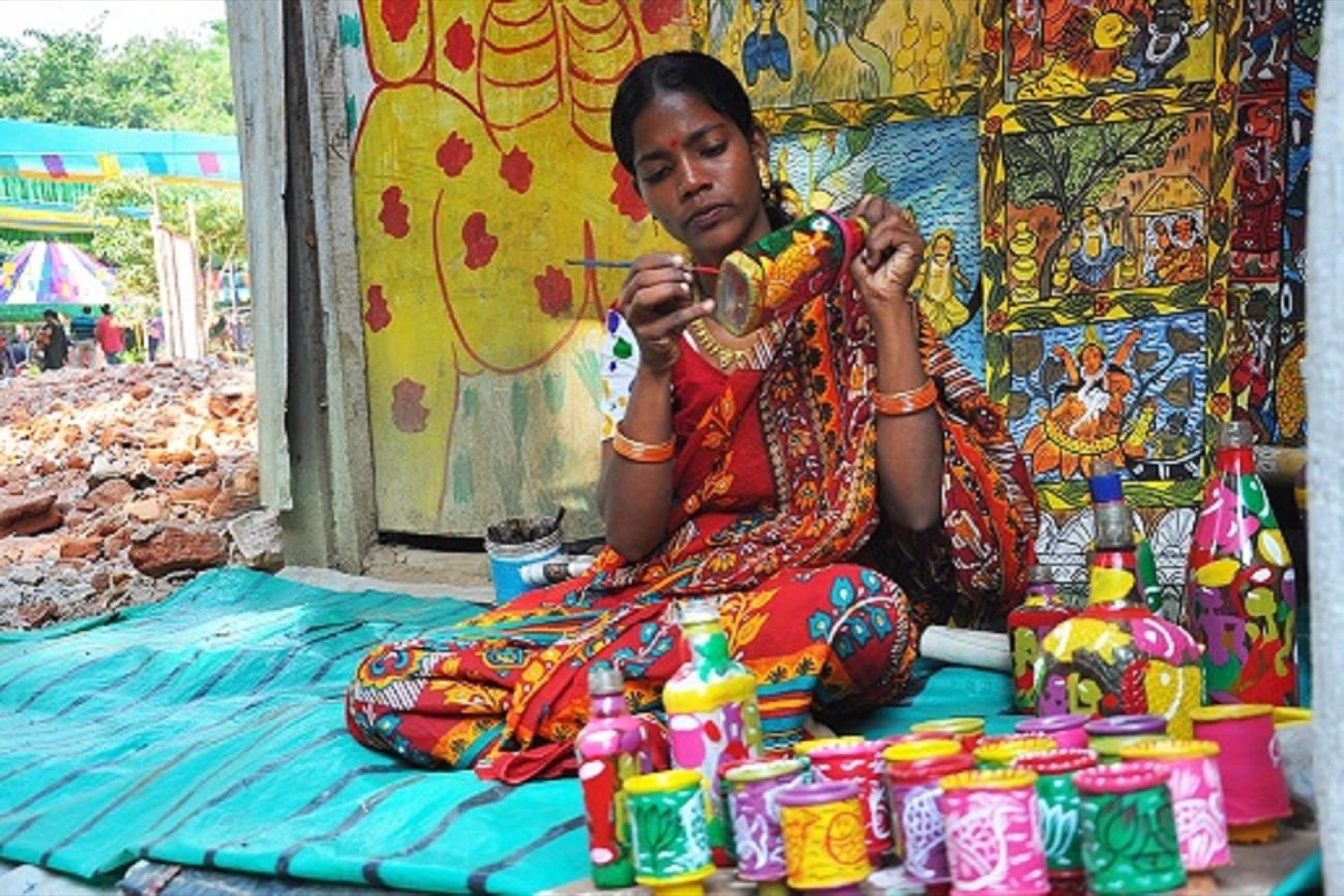
-
Table of Contents
“Uncover the world’s artistic treasures and immerse yourself in diverse cultures through Art and Cultural Tourism.”
Art and cultural tourism is a form of travel that focuses on exploring and experiencing the creative expressions of different cultures around the world. It involves visiting museums, galleries, historical sites, festivals, and other cultural events to gain a deeper understanding of a destination’s artistic heritage. This type of tourism allows travelers to immerse themselves in the local art scene, witness traditional performances, and engage with local artists and artisans. By delving into the artistic and cultural aspects of a place, tourists can gain a unique perspective on its history, traditions, and contemporary society. Art and cultural tourism not only promotes cultural exchange and appreciation but also contributes to the preservation and promotion of artistic heritage globally.
The Impact of Art and Cultural Tourism on Local Communities
Art and cultural tourism has become increasingly popular in recent years, as more and more travelers seek out unique and immersive experiences that go beyond the typical tourist attractions. This form of tourism allows visitors to explore the creative expressions of different cultures around the globe, providing a deeper understanding and appreciation of the local communities they encounter.
One of the most significant impacts of art and cultural tourism is its contribution to the local economy. When tourists visit a destination specifically to experience its art and culture, they often spend money on accommodations, dining, transportation, and souvenirs. This influx of tourist dollars can have a significant positive effect on the local businesses and communities, providing a boost to the economy and creating jobs for residents.
Furthermore, art and cultural tourism can help preserve and promote local traditions and heritage. Many communities rely on their artistic and cultural practices as a way to preserve their identity and pass down traditions from one generation to the next. By attracting tourists who are interested in experiencing these traditions firsthand, local communities are encouraged to continue practicing and preserving their cultural heritage. This not only helps to maintain the unique character of a destination but also ensures that these traditions are not lost over time.
In addition to economic and cultural benefits, art and cultural tourism can also have a positive social impact on local communities. When tourists visit a destination to experience its art and culture, they often interact with local residents, artists, and artisans. This exchange of ideas and perspectives can lead to a greater understanding and appreciation of different cultures, fostering tolerance and respect among people from diverse backgrounds. It can also create opportunities for cultural exchange and collaboration, as artists and artisans from different parts of the world come together to share their creative expressions.
However, it is important to note that art and cultural tourism can also have some negative impacts on local communities if not managed properly. One potential issue is the commodification of culture, where traditional practices and artistic expressions are reduced to mere products for tourist consumption. This can lead to the loss of authenticity and the dilution of cultural practices, as locals may alter their traditions to cater to the expectations of tourists. It is crucial for destinations to strike a balance between preserving cultural integrity and meeting the demands of tourists.
Another challenge is the potential for gentrification and displacement of local residents. As art and cultural tourism becomes more popular, property values in certain neighborhoods may increase, making it difficult for local residents to afford housing. This can lead to the displacement of long-time residents and the loss of community cohesion. It is essential for destinations to implement policies and initiatives that prioritize the well-being and inclusion of local communities, ensuring that they benefit from the growth of art and cultural tourism.
In conclusion, art and cultural tourism can have a significant impact on local communities. It can contribute to the local economy, preserve and promote cultural heritage, foster social understanding, and create opportunities for collaboration. However, it is crucial for destinations to manage this form of tourism carefully, ensuring that it does not lead to the commodification of culture or the displacement of local residents. By striking a balance between economic growth and cultural preservation, art and cultural tourism can be a powerful tool for promoting sustainable development and fostering cross-cultural understanding.
Unveiling Hidden Gems: Artistic Treasures in Lesser-Known Destinations
Art and Cultural Tourism: Exploring Creative Expressions Around the Globe
Unveiling Hidden Gems: Artistic Treasures in Lesser-Known Destinations
Art and cultural tourism has become increasingly popular in recent years, as travelers seek to immerse themselves in the rich tapestry of creative expressions found around the globe. While famous museums and iconic landmarks often steal the spotlight, there is a wealth of artistic treasures waiting to be discovered in lesser-known destinations. These hidden gems offer a unique and authentic experience for those willing to venture off the beaten path.
One such destination is the city of Oaxaca in Mexico. Nestled in the southern part of the country, Oaxaca is a vibrant hub of indigenous culture and artistic traditions. The city’s historic center is a UNESCO World Heritage site, with its colonial architecture and colorful markets providing a feast for the senses. Oaxaca is renowned for its traditional crafts, such as pottery, weaving, and woodcarving. Visitors can explore local workshops and witness the intricate process of creating these beautiful works of art. The city also hosts numerous festivals throughout the year, showcasing traditional dances, music, and culinary delights. Oaxaca truly offers a glimpse into the heart and soul of Mexican art and culture.
Moving across the globe to Southeast Asia, the city of Chiang Mai in Thailand is another hidden gem for art enthusiasts. Known as the cultural capital of Thailand, Chiang Mai is home to a thriving arts scene. The city is dotted with art galleries, showcasing a diverse range of contemporary and traditional artworks. Visitors can also explore the famous Night Bazaar, where local artisans sell their handicrafts, including intricate wood carvings, silk textiles, and delicate ceramics. Chiang Mai is also renowned for its traditional Thai massage, which is considered an art form in itself. Travelers can indulge in a relaxing massage while immersing themselves in the local culture.
Continuing our journey, we arrive in the picturesque town of Ubud in Bali, Indonesia. Ubud has long been a haven for artists and creative souls, drawn to its lush landscapes and spiritual atmosphere. The town is home to numerous art galleries and studios, showcasing a wide range of artistic styles and mediums. Visitors can also explore the famous Ubud Monkey Forest, where ancient temples and mischievous monkeys coexist in harmony. Ubud is also known for its traditional Balinese dance performances, which tell stories of mythology and folklore. Watching these mesmerizing performances is a truly enchanting experience, transporting visitors to a world of beauty and imagination.
Heading back to Europe, we find ourselves in the charming city of Porto in Portugal. While often overshadowed by Lisbon, Porto is a hidden gem for art lovers. The city’s historic center, with its narrow streets and colorful buildings, is a UNESCO World Heritage site. Porto is famous for its azulejo tiles, which adorn many of its buildings, depicting scenes from Portuguese history and culture. Visitors can explore the city’s numerous art galleries and museums, including the renowned Serralves Museum of Contemporary Art. Porto is also known for its vibrant street art scene, with colorful murals adorning the city’s walls. Exploring Porto’s artistic treasures is a journey through time and a celebration of Portuguese creativity.
In conclusion, art and cultural tourism offer a unique opportunity to explore the creative expressions of different cultures around the globe. While famous destinations often steal the spotlight, lesser-known places like Oaxaca, Chiang Mai, Ubud, and Porto offer a wealth of artistic treasures waiting to be discovered. These hidden gems provide an authentic and enriching experience for travelers willing to venture off the beaten path. So, pack your bags and embark on a journey of artistic exploration, uncovering the hidden gems that lie beyond the tourist hotspots.
Art and Cultural Festivals: Celebrating Diversity and Creativity
Art and Cultural Festivals: Celebrating Diversity and Creativity
Art and cultural festivals are vibrant celebrations that bring together people from all walks of life to appreciate and experience the rich tapestry of human creativity. These festivals serve as a platform for artists, performers, and cultural enthusiasts to showcase their talents and share their unique perspectives. From music and dance to visual arts and theater, these festivals offer a diverse range of artistic expressions that captivate and inspire audiences.
One of the most renowned art and cultural festivals in the world is the Venice Biennale. Held every two years in Venice, Italy, this festival attracts artists, curators, and art enthusiasts from around the globe. The Biennale showcases contemporary art in various forms, including painting, sculpture, installation, and performance art. It provides a space for artists to experiment, push boundaries, and engage in critical dialogues about the state of art in the modern world.
Another notable festival is the Edinburgh Festival Fringe, which takes place annually in Edinburgh, Scotland. This festival is the largest arts festival in the world, featuring thousands of performances across various genres, including theater, comedy, dance, and music. The Fringe is known for its inclusive and experimental nature, providing a platform for emerging artists to showcase their work alongside established performers. It is a celebration of creativity and a testament to the power of the arts to bring people together.
In Asia, the Holi Festival in India is a vibrant celebration of color and joy. This ancient Hindu festival marks the arrival of spring and the victory of good over evil. Participants throw colored powders and water at each other, creating a kaleidoscope of hues that symbolize unity and harmony. The Holi Festival is not only a cultural event but also a visual spectacle that attracts tourists from all over the world.
Moving to South America, the Carnival in Rio de Janeiro, Brazil, is an explosion of music, dance, and elaborate costumes. This festival is a celebration of Brazilian culture and heritage, with samba schools competing in a parade that showcases their creativity and craftsmanship. The Carnival is a feast for the senses, with the rhythmic beats of samba music and the vibrant colors of the costumes creating an electrifying atmosphere that is hard to resist.
In Africa, the Festival au Désert in Mali is a unique celebration of music and culture. Held in the Sahara Desert, this festival brings together musicians from different ethnic groups to perform and share their traditions. It is a testament to the power of music to transcend cultural boundaries and foster understanding and unity. The Festival au Désert is not only a celebration of African music but also an opportunity for visitors to immerse themselves in the rich cultural heritage of the region.
Art and cultural festivals are not only a source of entertainment but also a means of promoting tourism and economic development. These festivals attract visitors from all over the world, who contribute to the local economy by spending on accommodation, food, and souvenirs. Moreover, they provide a platform for local artists and performers to gain exposure and recognition, which can have a positive impact on their careers.
In conclusion, art and cultural festivals are a celebration of diversity and creativity. They bring together people from different backgrounds to appreciate and experience the rich tapestry of human expression. From the Venice Biennale to the Holi Festival in India, these festivals showcase the power of art to transcend cultural boundaries and foster understanding. They are not only a source of entertainment but also a means of promoting tourism and economic development. So, whether you are a lover of art, music, or dance, attending an art and cultural festival is an experience that should not be missed.Art and cultural tourism is a significant aspect of the travel industry, allowing individuals to explore and appreciate creative expressions from different parts of the world. It offers a unique opportunity to immerse oneself in the rich heritage, traditions, and artistic endeavors of various cultures. By engaging with local art forms, museums, galleries, and cultural events, tourists can gain a deeper understanding of a destination’s history, values, and identity. Art and cultural tourism not only promotes cross-cultural understanding but also contributes to the preservation and promotion of artistic traditions. Overall, it is a valuable and enriching experience that allows travelers to connect with the global artistic community and appreciate the diverse creative expressions found around the globe.









